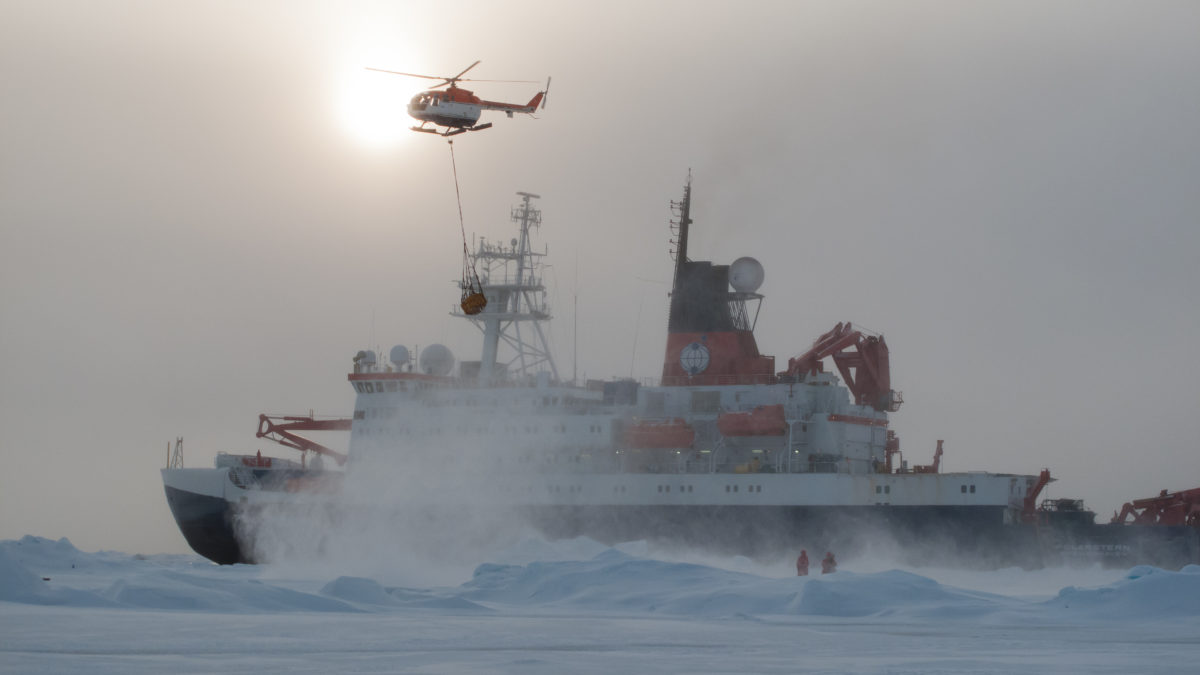
“This extraordinary expedition is set to make a step change in climate science – and ESA is contributing with a range of experiments.”

Das deutsche Forschungsschiff Polarstern während einer Eisstation im zentralen arktischen Ozean. Der Bordhubschrauber hebt gerade zu einem Meereisdickenmessflug mit dem EM-Bird ab. The German polar research vessel Polarstern during an ice station in the Central Arctic Ocean. The helicopter is taking off for an sea ice measurement flight with the sensor EM-Bird. Foto aufgenommen während der Polarstern-Expedition ARK-XXVII/3 im Sommer 2012 (2. August-7.Oktober 2012, Tromso-Bremerhaven). Fahrtleiter Antje Boetius; Die Expedition IceArc hatte zum Ziel, die Biologie. Physik und Chemie des Meereises zu untersuchen und die Auswirkungen seines Rückganges auf das gesamte Özeansystem bis in die Tiefsee zu erforschen. Photo taken during the Polarstern expedition ARK-XXVII/3, called IceArc, in summer 2012 (2nd August - 7th October 2012). During this expeditions scientists investigated the biology, chemistry and physics of sea ice and the impact of sea ice loss on the entire Arctic Ocean system.
“This extraordinary expedition is set to make a step change in climate science – and ESA is contributing with a range of experiments.”